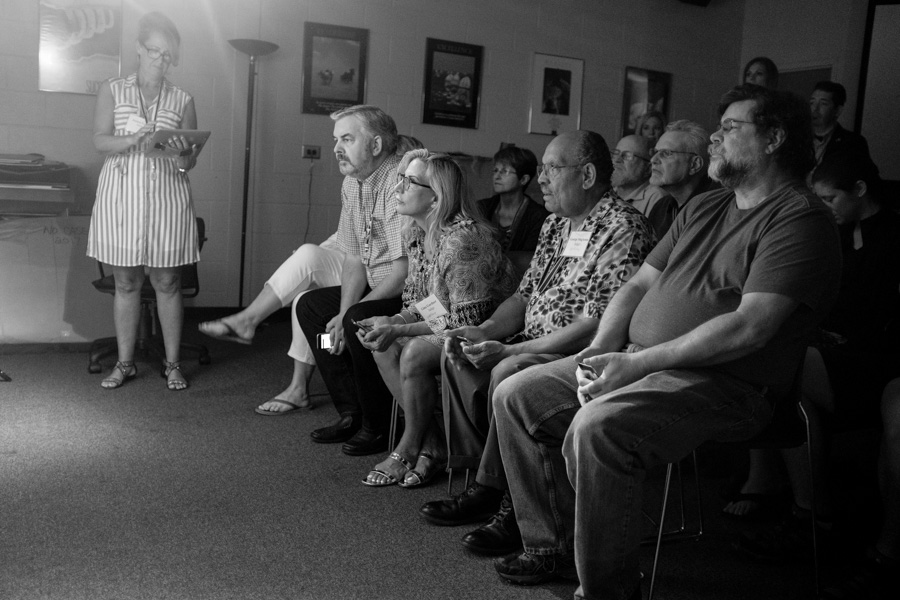
First, Some History
There are all kinds of photographic competitions and they are judged different ways. This particular system of judging is based on the one used by the Professional Photographers Association of America. It is used at The International Photographic Competition (IPC), the District Competitions that feed into IPC, Many state competitions and local groups as well.
To be an IPC certified judge is a long process that involves classes, traveling, judging and review. It is, I believe, the most detailed training of any competition judge.
I am not an IPC Judge.
I am a Master Photographer with the PPA, which means I have participated in the IPC for years and have achieved the required success (13 merits) to receive my Master Degree. When local photography organizations are having a competition they hope to get IPC qualified judges but if they can’t (there aren’t that many) they usually settle for Master Photographers. We have had no training at all but we have been judged for years and the hope is that we have learned enough to be able to approximate a score that is close to what IPC judges would give. For most, the local competition with it’s un-qualified judges is just a testing ground to prepare images for District and IPC where they will be judged by certified judges and their merits will count towards their Master status.
This article is meant to convey what it’s like to be a judge for the first time with no training or certification and should in no way be seen as having any weight or expertise other than me sharing an experience that few ever get to have. I am not a judge. I’m just a guy who got asked to judge because they couldn’t get a real judge.
Also, they call themselves jurors but I say judge because I think it’s more clear to my non-photography friends.
How Photographic Competition Judging Works
At the local level, which is where I was judging, there are 3 judges. We sit in front of a monitor where the images are displayed. The image appears on screen and the technician says the title. Each judge enters a score into an Ipad. The Jury Chair (person running the show) announces the average score. In most cases, that’s it… the image goes away and the next image appears.
The scores fall in a 30 point range from 70-100. Your average score for the image must be 80 or higher for you to receive a “merit.” At the local level, a merit doesn’t usually mean anything but at the IPC it means everything. You need 13 merits to become a Master Photographer. You can only submit four images a year so every merit is crucial to your journey. Typically, only about half the images in any competition get a merit… sometimes less.
Sometimes, after a score is announced, there is a challenge. Any judge can challenge the final score. When this happens, the challenger then says his score and explains how they arrived at it. Then, each judge speaks a bit about their score and finally the challenger gets a rebuttal. Then everyone re-scores the image. The purpose of the challenge is to stop the process so that a judge can make a case, for or against, the average score. So, say I score an image 87 and the final score is 78… I would challenge so that I could point out some things about the image that led me to my score in the hope that my fellow judges would change their score to one closer to mine. At the same time, I’m looking for some explanation as to why they scored the image so much lower than I did. I might show the judges good reason to score higher or they might point out some things I didn’t see and I will re-score lower. I suppose the idea is that, whenever the judges are far apart on their scores, there should be a discussion and a new consensus.
Challenges are the best part of competition by far.
There are also some cases where there is a mandatory challenge. For example if a majority of the judges score an image as a merit but it still doesn’t have a final score that is a merit, the jury chair will call a majority challenge so that the judges can discuss the image and arrive at a better consensus. The same happens if the majority is no merit and also if the judges scores are too far apart in general.
What I’m Thinking Before It Starts
“Please don’t let my scores be too far away from everyone else’s”
I suppose that when you are a certified judge with years of experience, you are more fearless but I was just hoping that I would be in the same ballpark as the other judges. You don’t want to be at 91 on a score when everyone else is at 78. That’s fine when you have years of experience and training to justify your reasons but first time in the chair? You just don’t want to look stupid. This is particularly hard because I’m only pretending to be a judge. I’m not giving the image a score based on what I think so much as giving it the score I believe it would get if entered into IPC. I personally have a great many opinions about how the judging is done and how the scoring works but once you are in the chair all that is moot. My job is to help prepare the image makers for the next level of competition by giving them a score that is as close to what they can expect there as possible. Luckily, I’ve competed for six years and hosted a show from the IPC for four of those years where I interviewed judges about their process so I’ve got a lot of information at my disposal.
The first 5 images my score either matched the final score or was very close. Big sigh of relief. It’s one thing to watch the competition and “arm-chair quarterback” but entirely different to be in the chair.
What I’m Thinking When Scoring
Let me be clear: This is what I was thinking. It is in no way the proscribed method for judging by the PPA. I have never been through the judge’s course. I don’t know what they teach. Left to my own devices, this is what I came up with and I thought it might be interesting to share it. Especially if you are thinking about judging and wonder what it’s like.
The 30 point range is divided into six categories, each with five points. The first thing you do is decide what category the image belongs in, then you decide what score within the category. I thought about this a lot on my drive to Tallahassee ( and had some suggestions from judge friends).
My goal was to try and give a score each time that had purpose. For example, the Merit category is 80-84. I never wanted to give an 80-81 unless I was prepared to have that image score in the 70’s (no merit) as it’s final score. If I gave an 80-81 I was saying “I’m on the fence… I’m going to err in favor of the maker but if the other judges see cause to score lower I won’t argue.”
By contrast, a score of 84 that ends up being an 88 would not be challenged. I scored it at the edge of that category (85-89).
But, a score of 84 that gets a 78? That one I challenge. I’ve scored it at the top of the merit category and so I’m prepared to defend that score if someone thinks it doesn’t deserve a merit. If I score 81 and it comes in at 79 I can’t challenge because I obviously didn’t think it was very strong to begin with or I would have scored it higher in the category.
I found that selecting the category was not that hard. Most of my thoughts went toward figuring out where to place it within the category because that’s where you really state your conviction. If you are trying to convince me to change my score to the 80’s and you scored it an 81 well it’s obvious you aren’t exactly in love with the image either.
The Challenge
The challenge is the hardest part of being a judge. You have to say out loud what you liked or didn’t like about the image. But it’s not as simple as that because you have to speak in photography terms and address the 12 elements that are used when judging image competition:
Technical Excellence
Creativity
Style
Composition
Presentation
Color Balance
Center of Interest
Lighting
Subject Matter
Technique
Storytelling
These 12 elements are what judges are supposed to be… well… judging. So, when you speak about an image you need to speak in those terms. You don’t say, “I think this is really neato!” You say, ” This is a tough subject to photograph but I really love the lighting and the color harmony between the subject and the background. The leading lines really bring your eye straight to the subject and the story this piece is telling is obvious.”
Yeah… not so easy to do on the fly believe me, even for me a guy who never shuts up. It’s easy to see that an image isn’t a merit but trying to describe why in an articulate and clinical way? Not so easy.
The hardest part is not talking too much, believe it or not. Your first instinct is to want to say everything you can think of to justify your score but I’m told you should just mention a couple of things to give the other judges a chance to say things too.
I challenged a couple of images up and at least one image down (painful to do but necessary. You aren’t doing anyone a favor if you give them a good score only to have it tank at IPC)
Afterwards
After the competition, all the images are brought back up at the meeting and the judges talk about each one. This is only done at the local level as the whole thing is seen as a test run for IPC. This part of the night is both good and bad. Good in that you get to explain your scoring, bad in that you have to explain to someone why their image isn’t going to score well up the line. People are emotionally attached to their work and it’s hard to hear that someone doesn’t think it’s as great as you do.
Summation
I really enjoyed the experience. It was unlike anything else I’ve ever done and I’ve been approached to do it a few more times locally in the state. In the past I’ve been asked to judge at state conventions and I’ve always said no because I wasn’t a Master Photographer. Now that I am, I would do it if they needed me.
I’ve always loved the competitions and some of my best friends are judges. I’m known for speaking out quite a bit about problems I perceive in the scoring process and I’m sure that sometimes people take it personally but I can assure you that I have nothing but respect for the folks who judge.
